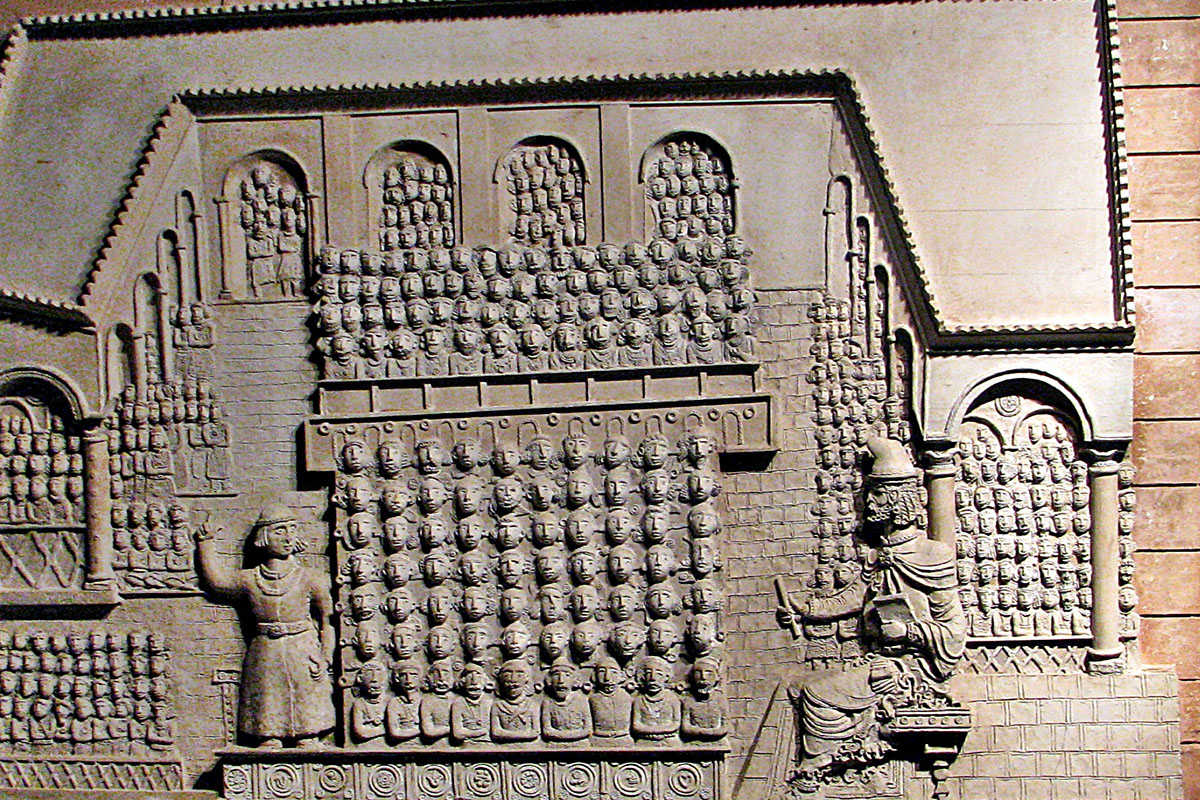Kurdistan, the Birthplace of the Babylonian Talmud
At the beginning of the 3rd century CE, Babylon became the main center of Rabbinic studies. Academies were founded by Samuel of Nehardea and by “Rav” -- the Amora Abba Arika, a disciple of Judah haNasi.
Under the rule of the Jewish Queen Shlomis Alexandra (also known as Shlomtzion, the widow of King Yannai, grandson of Judah the Maccabee) 76-66 BCE, and under the advice of her brother Rabbi Shimon ben Shetach, the Pharisees (Rabbinical Jews) split with the Sadducees and other militant Jewish groups. Although the Pharisees opposed Roman rule, they preferred academic study to military revolt.
In the years prior to the destruction of the Temple in 70 CE, this rift in approach to Rome increased to the point of open conflict with Rome and between the militants themselves. The Hellenists sought to assimilate or appease Rome through adopting its culture. The Pharisees sought to preserve the spiritual heritage of Judaism through academies and study. The Herodians, Sadducees and their Jordanian converts plotted revolt. Even though the first revolt resulted in the destruction of the Temple, there was some recovery. The second revolt under Bar Kochba in 135 CE, however, was utterly crushed by Rome. There was a Jewish majority in Israel for hundreds of years after this, but Israel as a autonomous political entity ceased to exist.
After these events, the split became geographical. The militant Jews headed south to Jordan and Southern Arabia, eventually founding the Jewish State of Himyar (the Biblical Sheba) in what is now Saudi Arabia and Yemen, still retaining the name “Iudean” or what has come down to us as “Jews”. They practiced a modified form of nationalistic Judaism that was eventually transformed into Islam by the Prophet Mohammed. The Rabbinic Jews moved first east, then north and eventually to Babylon.
Even after crushing the various Judean revolts, the Romans allowed the Pharisees to establish centers of learning in Yavneh (near modern Tel Aviv) and later in the Galilee and Golan heights. The Roman conversion to Christianity under Constantine and its associated intolerance, combined with the military aggressions of the Jews of Southern Arabia led to a series of decrees essentially making Judaism an illegal religion.
Babylon, specifically the area near what is now called Kurdistan, provided a safe haven for Rabbinic -- but not militant -- scholars. The Babylonian Talmud reflects a society preponderantly based agriculture and crafts. They were learned in Jewish Studies and had produced in the past the books of Ezekiel, Daniel and Tobit. At the beginning of the 3rd century CE, Babylon became the main center of Rabbinic studies. Academies were founded by R. Samuel at Nehardea and by Rav at Sura. In the later 3rd century, the academy of Pumpedita was founded to replace that at Nehardea (destroyed in 261 CE). The importance of these communities was further enhanced with the abolition of the Israeli Patriarch (Local Ruler) in 425 CE, when Babylon became the spiritual center for all Jewry.
Source: A History of the Jewish People


Hayim Hillel Ben-Sasson
Professor of Jewish Medieval History at Hebrew University of Jerusalem, Editor of “A History of the Jewish People”